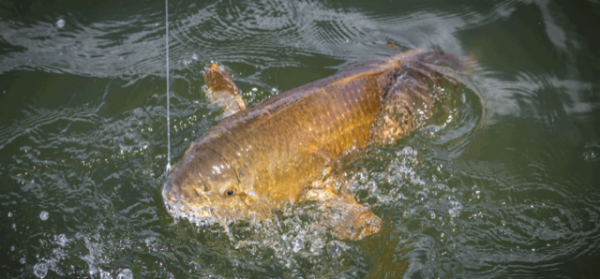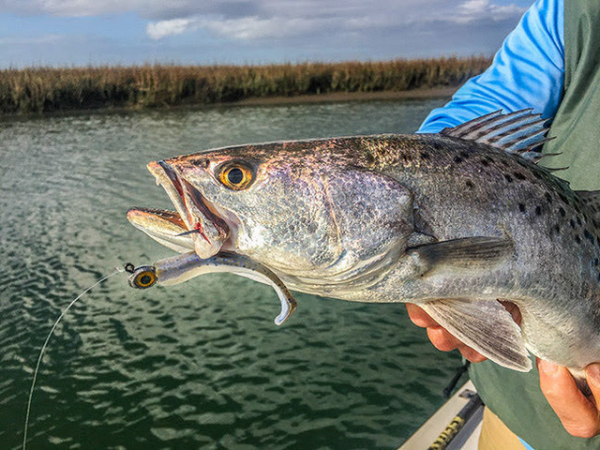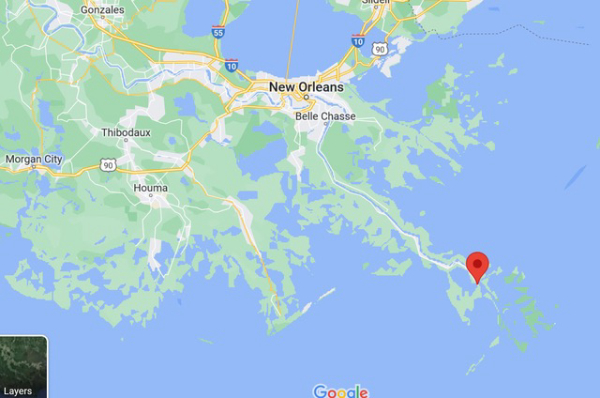
Anyone who has made their first trip to Louisiana’s fabled bayou country within the last few years likely comes back impressed by the inshore fishing. It’s good—way better than most other locations along much of the Gulf Coast.
But it’s no longer as spectacular as it once was.

While days of landing 100 trout and 25 or more redfish are still possible, they are the exception, not the rule. As more and more people have discovered the amazing fishery of the Mississippi Delta, the incredible numbers of fish formerly caught here are not being caught nearly so often by nearly as many anglers.
It can’t be blamed on the usual target, commercial gill net fishermen, because that fishery has been banned since 1995, not only in Louisiana but in waters of Mississippi, Alabama and Florida to the east and Texas, much earlier, to the west.

The real culprit is one that’s not fixable by a few fishery laws, unfortunately, and maybe not fixable at all. Here’s part of the abstract from a 1999 report by Louisiana F&W scientist R. Glenn Thomas:
“The magnitude of changes occurring in Louisiana’s estuaries creates a unique set of challenges in fish habitat management. Louisiana leads the nation in rate of coastal land loss, with some 70% of national losses. Both natural and anthropogenic factors are involved in coastal land loss in Louisiana: subsidence, erosion, sediment and freshwater deficits, channelization, and rising mean sea level. Disruption of the natural deltaic cycles of the Mississippi River has been particularly detrimental to estuarine fish habitat. Navigation and flood control needs have resulted in the near-total leveeing of the river, preventing normal overbank flooding, channel filling and switching, delta and
subdelta development, and sediment nourishment of adjacent and down-current marshes. The resulting system is one in which the quantity and quality of estuarine habitat are linked to rapidly degrading wetland environments. Steep declines in fish production have been forecast for the next century.”
Here we are in the next century, and sure enough, these chickens have come home to roost. While the fishing in Louisiana still looks great compared to the grossly over-subscribed fishery in places like Florida’s southwest coast, it’s not nearly what it once was. The fish that are there are still fatter and stronger than fish elsewhere, but there just are not so many of them in so many places as there once were—and that probably means that we can’t harvest them as we always have.
You can no longer go out there on your own, bumble around for a couple of days and then get on a spot where you load up on 5 pound trout and 8 pound redfish. While expert local guides can still put you on the fish, the spots are fewer and harder fished.
This, from Louisiana’s CCA, which has the redfish as its poster child:
“Louisiana is the redfish capitol of the world. Anyone who has fished here knows this to be the case.
But in the last decade or so, the stock is showing significant signs of decline.
According to recent studies from the Louisiana Department of Wildlife and Fisheries, redfish in Louisiana are experiencing overfishing. The SPR (spawning potential ratio) has been declining since 2005 and is at its lowest level since the mid ‘80s. Escapement (fish joining the spawning stock) and recruitment (juveniles entering the fishery) are also in significant decline. Recreational harvest levels are at their lowest since the days of the gill nets.
We have a problem with redfish, and it’s time to take action. The first step should be to stop killing and harvesting bull reds.
Right now, it is legal to harvest one redfish over 27 inches per angler each day. We support an end to this allowance, making it illegal to take any reds over 27 inches in Louisiana.
In fact, Senate Concurrent Resolution 46, by Senator Bret Allain and 19 co-authors, would direct the WLF Commission do just that…make the killing of red drum over 27 inches off limits and create penalties and fines for those who violate the rule. CCA Louisiana supports this resolution and conservation action. The resolution passed the Senate unanimously earlier this year and is currently being considered in the House of Representatives.
As we all know, there are many factors that have contributed to the decline of the redfish stock, and all of them should be addressed. Those factors include the massive menhaden harvest and bycatch in Louisiana waters, marine habitat degradation, and commercial netting. CCA and our partners will continue working to address those factors, as to ignore them would be to ignore a large part of Louisiana’s redfish problem.
In the meantime, we believe anglers should lead the way by releasing all redfish over 27 inches.
If SCR 46 passes, the Wildlife and Fisheries Commission will still have the final task of establishing the regulation. When they do, they will likely consider other management options as well, like bag and minimum size limits for recreational anglers. At that time, they should also address the other factors that are impacting the stock. CCA expects that the issue will come up for a vote at the WLF Commission later this summer.”
Bottom line is that it may be time for anglers who love Louisiana fishing to look in the mirror when they wonder what is happening to that amazing inshore fishery.
-- Frank Sargeant
Frankmako1@gmail.com